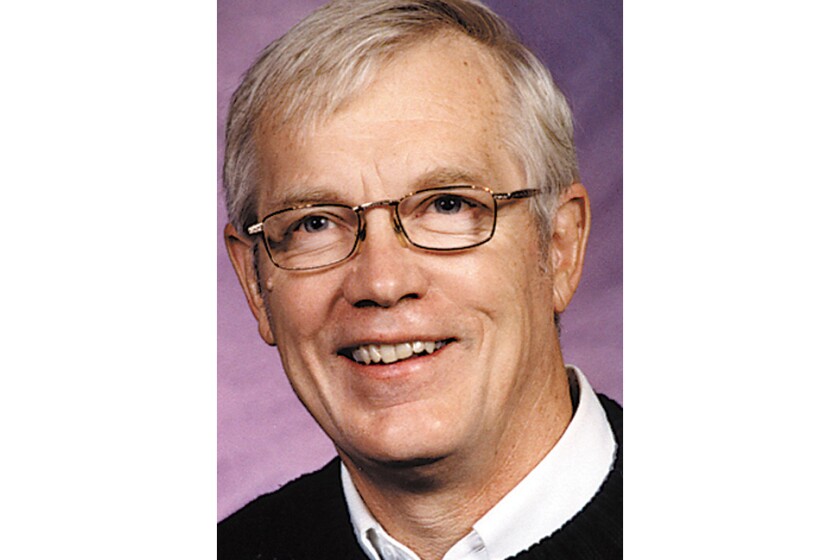The Minnesota State Teacher Colleges in the 40s, 50s and 60s were booming. GIs were returning from World War II and took advantage of the GI Bill.
This was also the time of the baby boom generation, which accounted for 76 million births in the United States from 1946 to 1964. Many GIs looking for work selected teaching as a profession. Jobs were plentiful.
ADVERTISEMENT
Realizing the need for teachers and better training, Minnesota created several laboratory schools that gave teacher education majors on-campus, hands-on experience.
One such school was the Bemidji State Normal ��������, later Bemidji State Teacher’s College. A student in the school was long-time Bemidji resident and optometrist Dr. Robert Edwards.
Bob grew up in Bemidji and attended BSU and Pacific University. Bob and his wife, Billie, have been married for 45 years and have a daughter and two sons.
They spend their summers on Wolf Lake and winters in Sanibel, Florida.
Thanks, Bob, for providing us with your experience at the lab school.
What years did you attend the BSU laboratory school?
1952-1960.
ADVERTISEMENT
What was the official name of the school?
Bemidji State Teachers College Laboratory ��������. It was located at the intersection of 16th Street and Birchmont Drive. The building is now the Bensen Education Building.
Approximately how many students attended?
About 180, grades K-9. The students attended Bemidji High �������� after completing grade 9.
How was the enrollment selected?
We were the neighborhood kids and lived east of Bemidji Avenue. We all walked or rode our bikes. Many of the school kids were children of the faculty.
What advantages, if any, did the students experience by attending the lab school?
ADVERTISEMENT
We had three student teachers in each lower grade class, plus the classroom teacher. The student teachers changed each quarter. We had access to all the college facilities. This included libraries, shops, gyms, art (including pottery kilns), music, pool, outside track and field, and some college speakers (including Hal Holbrook’s Mark Twain presentations).
Did the school offer any extracurricular activities?
Yes — band, orchestra, football, basketball, track and plays.
The Minnesota lab schools aimed to experiment with different teaching techniques and innovations. Do you feel that your teachers tried different strategies?
Yes, I believe so. We were exposed to a highly varied curriculum. We could take some experimental math classes and I’m sure we experienced different reading approaches.
What were a few of the more “different” things you did at the lab school?
Because of the resources available, we had extensive learning opportunities. In addition, we had exposure to college life and many college students. We would often interact with college students who had previously taught us.
ADVERTISEMENT
Could you have chosen to attend other schools in Bemidji if you so desired?
These were the post-war baby boom times; the Bemidji schools did not have enough classroom space. The Bemidji school system certainly encouraged the lab school as a “regular” extension of the local school system. They were very disappointed when the lab school closed.
How do you feel your classmates did when they went to high school?
Most of my lab school classmates did very well. Nearly all of my classmates attended post-secondary education.
What would you say was the main difference between traditional and lab schools?
Resources and exposure to the college. We were comfortable on the college campus. We had young teachers each quarter who were excited about teaching. We were exposed to many new ideas.
Were your teachers part of the BSU faculty and did they have professorial rank?
ADVERTISEMENT
The classroom teachers supervised teachers who had academic rank but also taught some college classes. All the non-classroom teachers also taught college courses (Art, Music, Physical Education, Industrial Arts, etc.)
Were you happy that you had the opportunity to attend the lab school?
Yes, absolutely.
How important was your family in your education?
Extremely important. Reading and exploration at every turn was a mantra in our family.
If there are other things you would like to say, please do.
There was a summer school session that we were encouraged to attend. Many of my classmates went to that session. It was voluntary. Several years later, I learned that the other kids came from the Bemidji school system to summer school. It was always a great additional experience for many of us, plus we met kids from other schools.
ADVERTISEMENT
Thanks again, Bob, for your information.
In addition to Minnesota, many states had laboratory schools, but few remain. The lab schools provided a true alternative for public school students. They were the forerunners of today’s alternative and charter schools.
I taught in the Mankato lab school in the late 60s. It was a K-12 school with 600 students, implemented 69 innovations, and had a 100% graduation rate largely because every student had a personalized learning plan. It closed in 1977.
The lab schools were not only good for students, they were also good for the teacher trainers. They provided employment and professors could keep their teaching skills sharp by “going into the trenches” to use the techniques taught in their classrooms.
Teacher training suffered a blow when the lab schools closed in Minnesota. The Bemidji lab school closed in 1975. St. Cloud closed its lab school in 1983.
BSU could and should reestablish itself as a forerunner in teacher training by exploring how Central Elementary could be used as a lab school.
It would provide income for BSU through state aid and employment for its staff. It’s an opportunity that should not be passed up.
Riddle: Why are fish so clever? (Answer: Because they spend so much time in school.) Let’s be clever and create a school where 100% of our students succeed.
100%
I want to thank the Beltrami County Republican Party for supporting the 100% initiative.
John R. Eggers of Bemidji is a former university professor and area principal. He also is a writer and public speaker.








